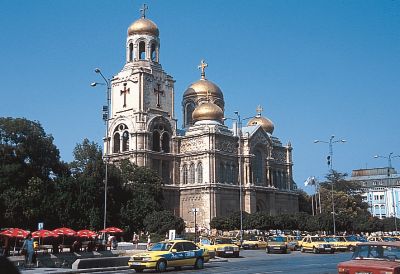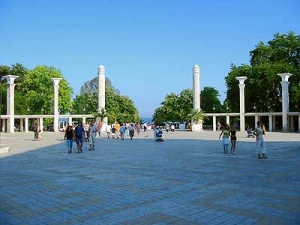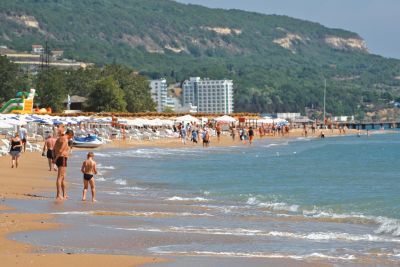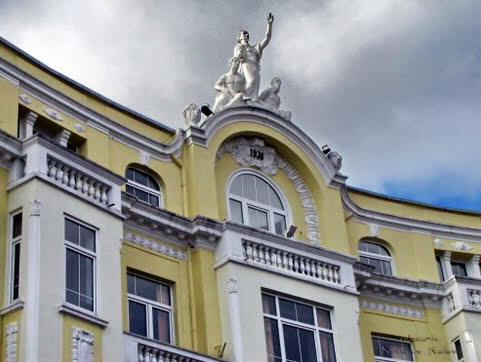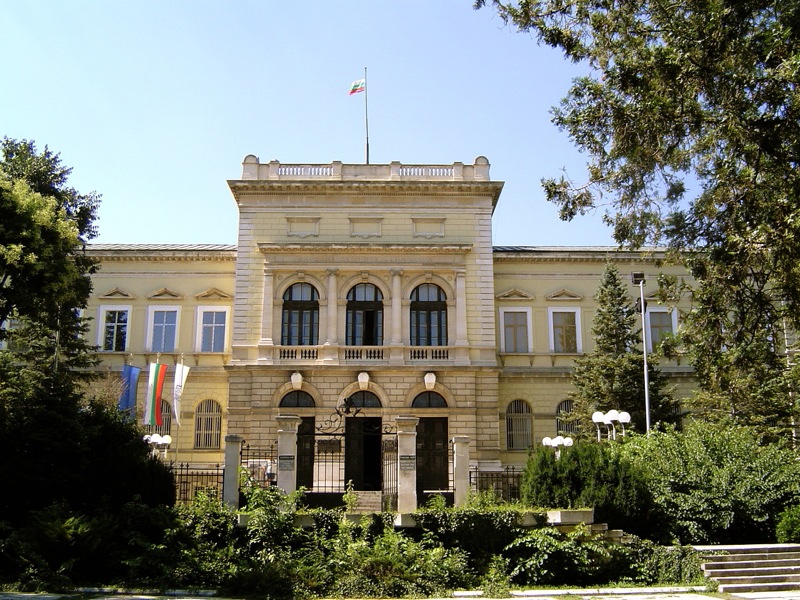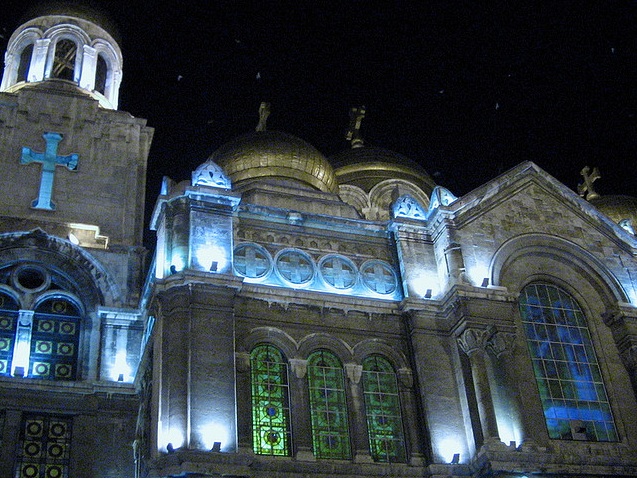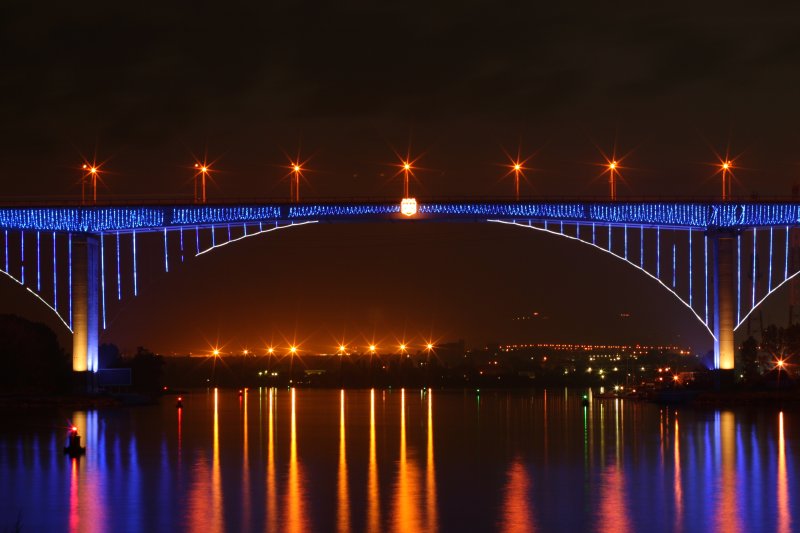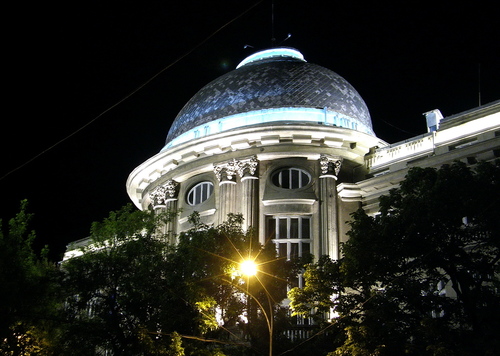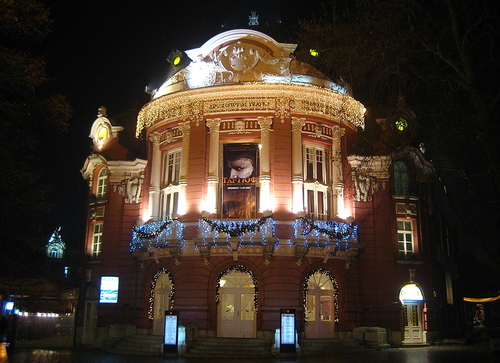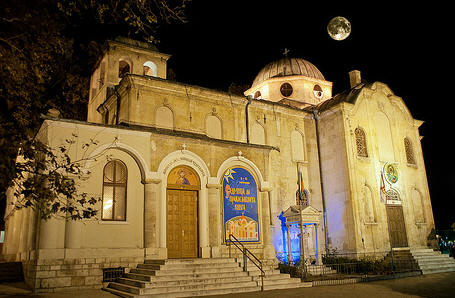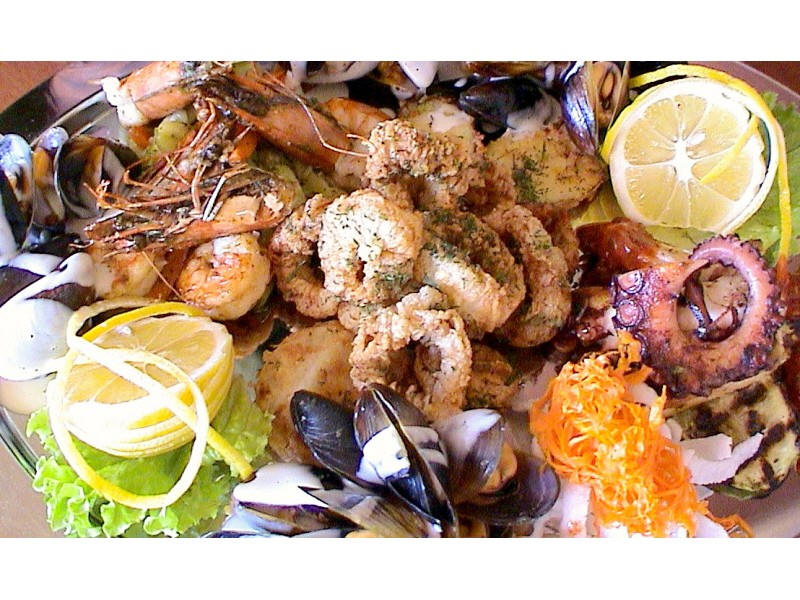After Sofia and Plovdiv Varna is the third largest city in
Bulgaria, and the largest national port for cargo and cruise
ships and has a population of 315,000.
Varna is located on the Black Sea coast (eastern Bulgaria)
at the end of the bay of Varna, some 400 km east of the
capital Sofia.
And 115 km north of the other port of Bourgas (Burgas).
As it has the largest port of Bulgaria, Varna is also called
the sea capital of Bulgaria.
Being near the resorts Golden Sands, Sveti Konstantin and
Albena, the city has an international atmosphere.
For instance, many sailors on leave in unfamiliar ceremonial
uniforms, tourists and local citizens that move along the
boulevards.
The city has a total length of 14 km along the coast and a
width of 9 km.
The city is surrounded by several parks and gardens,
vineyards and woods.
A striking detail of Varna is that the average age of the
citizens is very low, because 20% of the population consists
of students.
Another striking detail is that the beach of Varna is hardly
used by tourists, but almost exclusively by the residents of
Varna.
Tourists often visit the surrounding resorts and visit Varna
as a city.
From the Neolithic Age, the area was inhabited by people
whose culture was based on fish from the lagoon of Varna.
At about 1200
BC.
founded a Thracian tribe, the Krobisae, a settlement here.
Ancient Greek colonists from Miletus in Asia Minor, founded
in 585 BC.
Odessus.
In the 4th century BC.
Odessus came under the authority of the Macedonian kings,
and from 431 to 280 formed a part of the state of Macedonia.
Later it became a leader of the Euxine Covenant, along with
Tomi, Callatis, Mesembria and Apollonia.
Odessus fell into the hands of the Romans in 15
and developed under their rule until one of the mightiest
and most prosperous cities of the Black Sea.
The city of Varna (a Slavic name) was occupied by the
Bulgarians in 681 but in 970 recaptured by the Byzantines.
In 1201 Varna was back at the Bulgarian Kingdom.
Varna was served for centuries as an important defense
fortress against the Ottomans.
A Greek-speaking population remained in the city during the
Turkish period.
Varna was attacked by great Polish armies in 1443 and
Russian armies in 1773.
The trade flourished, and in particular the export of
livestock.
In 1828 the invading Russian troops controled Varna for some
time and in 1854 the allies of the Crimean War, Britain,
France and Turkey, founded headquarters in the city.
The harbor was rebuilt after 1878 by English architects and
construction was completed in 1906.
After the Second World War Varna was a time 'Stalin', named
after the Soviet leader.
In 1947, Tito and Dimitrov signed the Varna Convention, a
treaty for Yugoslavia and Bulgaria, which was a step closer
to a Balkan Federation.
Of the green miracles in Varna there are three absolute
musts: the Marine Gardens, the largest gardens in the
Balkans; the Euxinogradpark, the former Royal Palace and the
paradise of St. Constantine.
During the summer holidays in July and August the sun is
present ten to eleven hours a day.
Here you will find no chilly Baltic wind or Riviera Heat.
The city is
green and clean.
Varna is a city of old culture, living traditions and
ambitious undertakings.
Apart from the capital, there is almost no city in Bulgaria,
which has many different museums.
The former Girls Secondary School, which was the largest in
the Balkans, houses the Archaeological Museum, one of the
richest collections of the country.
A special treasury displays gold jewels and amazing ancient
works of inestimable value.
The icon exhibition and the collection of church silver are
impressive.
The National Revival Museum has an extensive and beautiful
collection.
The Ethnographic Museum has exhibitions with varying
demographic characteristics, the traditional lifestyle and
apparel show.
The Marine Museum is located in the shady alleys of the
marine gardens.
Other interesting museums include the Museum of the History
of Medicine, located in what is the first hospital in the
city.
It features the most comprehensive collection of
paleontological Bulgaria.
The New Museum of History is located in the oldest surviving
house in Varna, built in 1851.
The only Aquarium of Bulgaria has a special facade, covered
with ivy, and attracts many visitors.
In the archaeological museum, the results of various
excavations from Varna can be admired.
The cathedral dedicated to Mary Immaculate Conception is a
prominent landmark in Varna.
In the cathedral you will find one of the finest altar walls
of Bulgaria, and a beautiful bishop's throne.
Another interesting church is the St. Nikola church.
The Armenian church consisting of white stone is visited by
almost all tourists.


